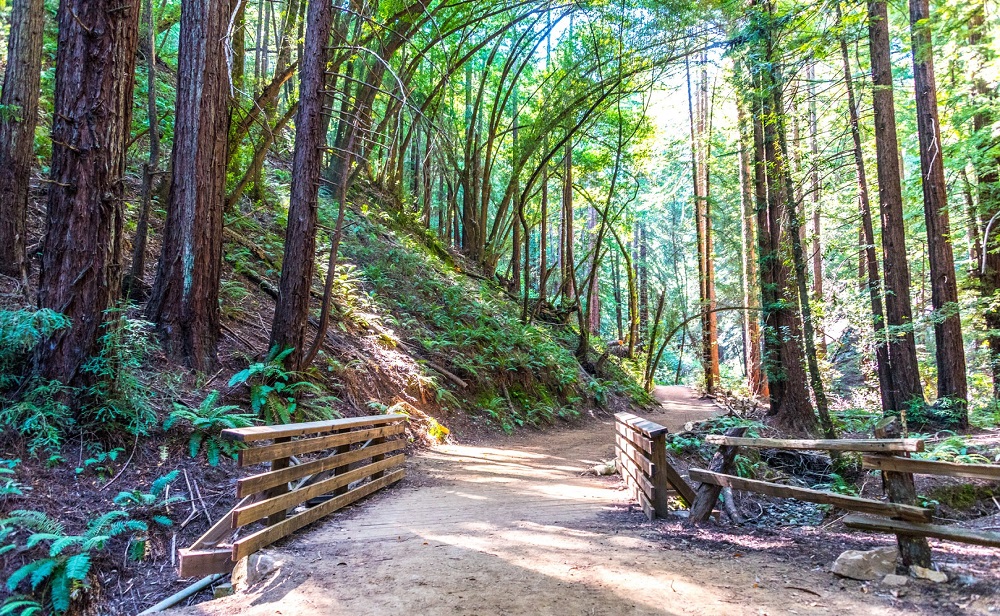Find hikes near me – this simple search phrase unlocks a world of outdoor adventure. Whether you’re a seasoned hiker seeking challenging climbs or a beginner looking for a leisurely stroll, the desire to connect with nature is universal. Factors such as distance, difficulty, scenery, and accessibility all play a crucial role in selecting the perfect trail, influenced by motivations ranging from fitness goals to peaceful escapes and social gatherings. This exploration delves into the process of finding the ideal hike, from data sources to effective presentation and personalized recommendations.
The quest for the perfect hike begins with understanding user needs. Different hikers – from families with young children to experienced solo adventurers – have diverse requirements. This understanding informs the design of search tools and the presentation of hike information. Reliable data sources are paramount, encompassing government websites, mapping services, and dedicated hiking apps. Effective visualization of trail details, including elevation profiles and clear directions, enhances the user experience. Finally, addressing potential issues, such as inaccurate information or safety concerns, ensures a positive and safe experience for all.
Understanding User Intent Behind “Find Hikes Near Me”
The search query “Find hikes near me” reveals a user’s desire for outdoor recreation within their immediate vicinity. Understanding the nuances behind this simple phrase, however, requires considering the diverse motivations and preferences of potential users. This understanding is crucial for developing effective search results and providing a tailored experience.
The phrase attracts a broad spectrum of individuals with varying levels of hiking experience and intentions.
Types of Hikers Attracted by “Find Hikes Near Me”
This search query appeals to a diverse range of individuals. Beginners may be looking for easy, accessible trails for introductory experiences, while experienced hikers might seek challenging routes with stunning vistas. Families often prioritize trails with manageable distances and kid-friendly features, whereas solo hikers might favor trails offering solitude and opportunities for self-reflection. The search term doesn’t inherently indicate experience level or group size.
Factors Influencing Trail Selection
Several key factors influence a hiker’s choice of trail. Distance is a primary concern, particularly for beginners or families with young children. Difficulty level, often categorized as easy, moderate, or strenuous, directly relates to the hiker’s fitness level and experience. Scenery, including views, waterfalls, and unique geological formations, is a major draw for many. Accessibility, encompassing trail surface, elevation gain, and the presence of obstacles, ensures that the trail is suitable for the hiker’s physical capabilities and equipment.
Motivations Behind Searching for Nearby Hikes
Individuals search for nearby hikes for a variety of reasons. Fitness is a common motivation, with hiking providing a low-impact cardiovascular workout. Exploration satisfies a desire to discover new places and appreciate natural beauty. Relaxation and stress reduction are sought by many who find solace in the tranquility of nature. Finally, social activity is another significant driver, as hiking can be a fun and engaging group activity. For example, a family might hike for a fun day out, a fitness enthusiast might look for a challenging climb, and someone stressed from work might seek a relaxing walk in a nearby park.
Data Sources for Nearby Hike Information
Locating nearby hiking trails involves leveraging diverse data sources, each with its strengths and weaknesses. Understanding these differences is crucial for selecting the most appropriate resource based on your needs for accuracy, comprehensiveness, and ease of use. The ideal source will depend on factors like the geographic area, trail popularity, and the level of detail required.
Several key sources provide information on hiking trails, each offering a unique perspective and level of detail. These sources range from official government bodies to crowdsourced mapping services and specialized hiking apps. Careful consideration of their individual characteristics is essential for effective trail discovery.
Government Websites as Data Sources
Government agencies, particularly park services and forestry departments, often maintain comprehensive databases of trails within their jurisdiction. These websites typically provide detailed trail maps, descriptions, difficulty ratings, and regulations. For example, the US National Park Service website offers extensive information on trails within its parks, including elevation profiles and points of interest. However, these sources might lack information on less official or privately maintained trails, and updates can sometimes lag behind changes on the ground. The user experience can also vary significantly depending on the agency and the website’s design.
Mapping Services as Data Sources
Major mapping services like Google Maps, Apple Maps, and OpenStreetMap incorporate hiking trail data, often sourced from user contributions and official datasets. These services offer convenient integration with GPS navigation and often provide visual representations of trails, elevation changes, and points of interest. Strengths include widespread availability and user-friendly interfaces. However, the accuracy and completeness of trail data can vary significantly depending on the level of user contribution and the mapping service’s data update frequency. Some trails might be missing or inaccurately represented, especially in less populated areas.
Hiking Apps as Data Sources
Dedicated hiking apps, such as AllTrails, Hiking Project, and Gaia GPS, specialize in providing comprehensive trail information. These apps often include user reviews, photos, trail conditions reports, and detailed maps with elevation profiles. They frequently offer offline map capabilities, a crucial feature for areas with limited or no cell service. However, these apps typically rely on user-generated content, leading to potential inaccuracies or biases in trail descriptions and difficulty ratings. Subscription fees are also common for accessing premium features.
Community Forums and Online Hiking Communities as Data Sources
Online forums and social media groups dedicated to hiking often serve as valuable sources of information. Hikers share their experiences, trail conditions, and recommendations, offering a more nuanced perspective than official sources. This crowdsourced information can be invaluable for understanding current trail conditions and identifying hidden gems. However, the information’s accuracy and reliability are entirely dependent on the community’s diligence and the potential for biased or outdated information.
Hypothetical Data Structure for Hiking Trail Information
Efficiently storing and retrieving hiking trail information requires a well-designed data structure. A relational database model would be suitable, utilizing tables to represent different aspects of the data. For instance, a `Trails` table could store trail name, location (latitude/longitude), length, elevation gain, difficulty rating, and a description. A separate `Reviews` table could link to the `Trails` table, storing user reviews, ratings, and timestamps. A `PointsOfInterest` table could store information about significant locations along the trail, linked back to the `Trails` table. This structure allows for efficient querying and retrieval of information based on location, difficulty, or user reviews. Indexing on key fields (e.g., location) would further enhance query performance.
Final Thoughts
Finding the perfect hike near you shouldn’t be a daunting task. By leveraging readily available data sources, employing effective presentation techniques, and incorporating user preferences, the process can be streamlined and enjoyable. Remember to always prioritize safety and be prepared for the conditions you’ll encounter on the trail. With a little planning and the right resources, discovering and enjoying local hiking trails becomes an accessible and rewarding adventure for everyone.




